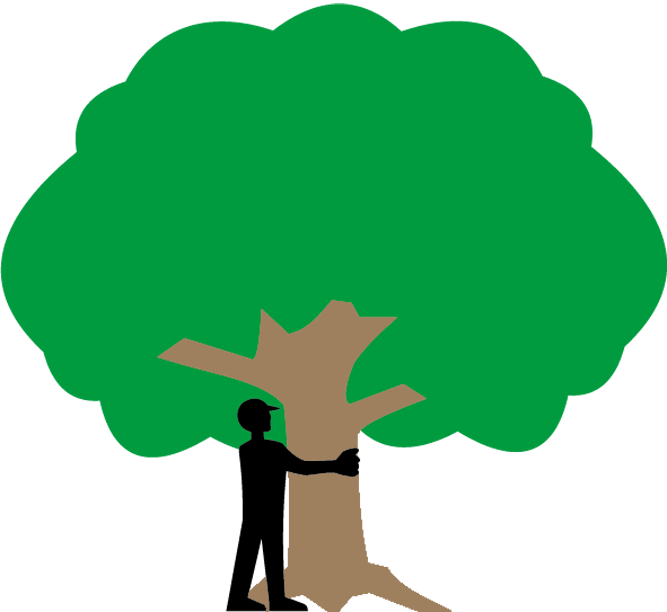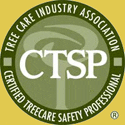Arboriculture Services

Pruning and Trimming
Tree trimming is divided into four different classes or types when done by a certified arborist. These well defined classes set up by the International Society of Arboriculture (ISA) go a long way toward making it possible to compare bids wisely. They have also developed a certification process for tree workers. I suggest that you make sure your trees are done according to ISA standards and that you know which class of pruning you will get. Price is not the only factor to consider. Less is not always better.
There are four classes of pruning and can be categorized as light, medium, or heavy. Class one is the best class because it reduces the need for pruning in the future, does the most to improve the health of the tree, and enhances the tree’s beauty the most. It requires more money at the time, but reduces the cost of tree maintenance over the long run. However, I do not always recommend class one. I like it best for older, long-life trees that have been well cared for over a long period of time.
Class One Pruning (as set forth by the ISA but in my words):
- Remove all dead limbs
- Remove all stubs (short, broken or cut limbs that are too long to heal)
- Selective prune to provide clearance around structures, wires, streets, sidewalks, and driveways
- Selective prune to correct crossing limbs (limbs that grow in such a way as to cause them to rub together)
- Remove vines
- Selective prune to enhance the natural beauty and balance of the tree and each limb
- Selective prune suckers (small sprouts that grow along the trunk and inside the canopy)
- Inspect and recommend rods/cables to reduce, control, and/or prevent splitting
- Inspect all crotches, previous wounds, stubs, and cavities
- Selective prune to manage wind resistance and light penetration
- Remove diseased limbs.
Class One is when we do our most complete pruning we do all those things and more. We prune to make trees better able to live next to each other by removing branches that damage each other and by leaving limbs that defend uninvited space. I call this "compatibility pruning". At times, we prune all the way to the growing tips of each limb selecting out small growth that is not growing desirably. This reduces the need for future pruning. We also prune so as to make a tree better able to fill space with well placed branches by removing obstructing limbs that force an otherwise good limb to grow poorly. We prune around structures in such a way as to reduce the need for future pruning by removing as much as can be done without compromising the tree’s health and beauty. We leave nothing undone. Everything the tree needs gets done. This is our "Class One" pruning.
Class Two pruning involves removing dead limbs of one inch or larger in diameter, pruning to clear around structures, sidewalks, driveways, streets, and wires. This class is a good class of care for the trees and costs less. It does not reduce the need for pruning in the future as much as class one does, but it does a lot to reduce future pruning needs. I recommend this class most often. It helps the tree greatly. We include things often left undone by the other guy like: removing stubs that are not healing, leaving a healable wound in it's place, selective pruning to provide growing space for limbs that are being forced to grow undesirably by other limbs, inspecting cavities, and pruning for desirable growth pattern in the long term.
Class Three pruning requires the removal of dead limbs of one to two inches in diameter and larger, plus the pruning for clearance around structures, wires, decks, etc. It is the least expensive class of pruning and does help the trees though less than the other two classes.
The Fourth Class of pruning is custom pruning. You can have whatever you would like done. I will help you to determine what to do if you like.
After the pruning is done we clean the area most thoroughly. When we leave the job it will be difficult to see that we were there by any means other than looking at the tree. We will even remove the dust from the driveways, sidewalks, porches, and streets. We clean the roof and gutters. And when all that is done, we take all the trimmings to the recycler where they are made into soil. We also offer to cut, stack, and leave the fire wood removed from your trees.
Arborist Techniques-ANSI A300 Standards
Deciduous Tree Pruning, when practiced by experienced, knowledgeable arborist's, can be beneficial to trees. However, pruning might not be helpful, and in fact can be harmful, in a number of scenarios that frequently present themselves.
Deciduous trees should not be pruned in the wrong seasons. During the late Summer/Fall time period, trees are under stress (i.e.: using energy), and should not have live limbs removed (dead wooding is a different story). The other season when trees should not be pruned is the period in the Spring when they are using energy to form new leaves.
Trees should not be pruned if they are under stress from other causes, such as recent storm or construction damage, drought conditions, insect infestation, or recent over-pruning, topping, over-fertilizing and other abusive practices.
Old, declining (dying-back) trees should not have live growth removed. Such trees need all the leaves they can produce, and pruning will speed up the rate at which they decline. If an old tree is determined to be a hazard, cabling may constitute a temporary solution; in many cases the tree should be removed (replaced).
Finally, many trees are doing just fine by themselves, and don’t particularly need pruning. Pruning such trees could be seen as a pretty shady practice. (sorry).
Every arborist can come up with a similar list of reasons why pruning certain trees is not warranted; what sets tree services apart is whether they abide by such a list. At Treehugger Tree Care, Inc. we make it a point of pride to fit tree pruning into the larger goal of providing sound tree care. Trees should be pruned when and only when they will benefit by it.
So why prune trees? Proper pruning can improve the health, physical strength, longevity and aesthetic appearance of trees. The International Society of Arboriculture, in its pruning standards, defines four basic pruning procedures: Crown cleaning, crown thinning, crown reduction, and crown raising. When performed competently, using proper cuts and in appropriate circumstances, these procedures should achieve some or all of the above goals.
Four techniques of pruning:
- Crown Cleaning involves removal of dead, broken and hanging branches, is almost always helpful (exception: when storm damage is severe enough that a tree should be removed.) This procedure is especially important for achieving the principal goal of pruning for tree health, that of preventing decay. Cleaning the crown is a relatively simple and inexpensive way to greatly improve the health and appearance of a tree.
- Crown Thinning is the selective removal of live branches which are weakly attached, interfere with other branches, cross them, or parallel them too closely. Thinning allows greater light penetration into the crown, which improves the health of the remaining branches. Skilled arborist's know how to select the eventual “winners” in the quest for light within a tree. They also understand how to help two branches coexist in circumstances where it’s apparent that the tree needs both. An experienced arborist is always careful not to remove too much live growth in a given year, and can come up with creative ways to effectively thin a tree. This may require a finer focus, in which many small cuts are made instead of several large ones. A careful arborist can “work with” a tree, sometimes over the course of many seasons, to help it a achieve a graceful, sound branching structure.
- Crown Reduction can help a tree achieve such a structure while also helping reveal it to the untrained eye. Crown reduction involves the cutting-back of the ends of a tree’s outer branches. When done properly, through the technique of light or moderate drop crotching. Crown reduction can significantly reduce the likelihood of major storm damage occurring in a tree, while introducing only insignificant amounts of decay into the wood. Light to moderate crown reduction is a very difficult task for most tree climbers, as it requires one to climb further out along many of the branches, and also to be adept at the use of pole saws and pole clips while stationed in very tenuous positions. Treehugger is competent at these techniques, and use them when required. Please note: Aggressive crown reduction, or “topping”, should never be advised or practiced by any arborist. Don't top trees!
- Crown Raising is simply the removal of some of the lowest branches on a tree, and is done for reasons of convenience and/or aesthetics, rather than for health reasons. Excessive raising of the crown can cause a number of problems, and should be avoided.
- Subordination: a technique to develop a strong central leader by select cuts in mid/upper canopy in younger trees by reducing canopy limb/branch weight so the tree will redistribute its hormones to the central leader. This is the most difficult, time consuming pruning technique performed only by experienced arborists---Class 1. This technique is also called “tip reduction”.
- Retrenchment: an advanced technique & art to bring a veteran/heritage tree into its elderly years by reducing upper canopy branch weight; in addition to supplemental restraint and overall tree health care considerations. Treehugger's advanced training and skills give your "high value" elderly tree the TLC it needs! Set up a consult today to discuss your care options. CONTACT PAGE
Experienced arborist's understand how trees respond to different pruning approaches. They’ve followed the changes in many particular trees through the seasons and the years, and thereby learned how to care for them, whether through careful pruning, or by choosing not to prune when it could cause harm. Before choosing an arborist to prune your trees, ask him or her to give you the locations of trees he or she has worked with over the years. Trees are precious commodities in Minnesota, and we need to care for them properly.
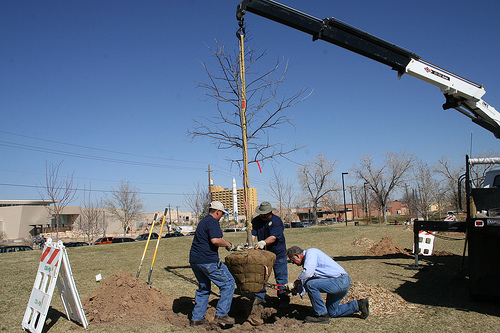

New Tree Plantings
The question most frequently asked to tree care professionals is “Which kind of tree do you think I should plant?” Before this question can be answered, a number of factors need to be considered. Think about the following questions:
New tree planting are the heart and soul of Treehugger's philosophy. “Plant more trees than I remove,” has been my motto. We have tree suppliers around the Metro, that offer thousands of sizes, species, and variety's of trees. We can plant:
- Seedlings, saplings, and transplants
- Bare root
- Potted
- Container-grown and field-potted
- Balled and burlapped (B&B)*** Really the ONLY tree I like to plant!
- Tree spade moved
We use ANSI A300 tree planting standards to give your tree the best start on growing into a healthy mature tree. We offer low cost options to get the Twin Cities greener each year. Tree planting prices include: tree, delivery, mulching, C20, clean up, and detailed instructions on how to care for your new tree. All planting locations will be Gopher Stated prior to digging. Planting rates start at $750 and are discounted for multiple tree plantings. ***Most 2" Ball and Burlap Trees will start around $1,500. Multiple tree planting discounts are offered.
Treehugger can select, deliver, and plant your new tree or you can buy and have it ready for the Treehugger to plant it.
Get a hold of Jason, by filling out information here: CONTACT PAGE
New Tree Selection Tips:
Trees and shrubs, often called stock, are available for purchase in different types. These types vary in terms of root mass, size, relative cost, ease of planting, handling, season of availability, and establishment success. In order to purchase the correct stock for your planting project, you should consider the differences between types of planting stock.
Look at the form. Plants with good form require less maintenance than plants with poor form. Look for the following:
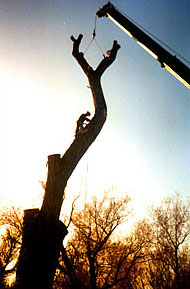
Tree Removal
When cutting a tree down, it is critical to exercise care to protect people, structures, and other plants on your property. Big, small, easy access, tough to get at, a scared friend or a longtime hazard; we can safely remove all types of trees. We acknowledge the integrity and wisdom of each tree that we remove. We understand that each tree deserves an honorable and respectful removal with full attention that it took years (sometimes hundreds) to grow, live, and flourish many feet in the air throughout weather pattens that a human would easily perish to. Each tree tells a story though their growth rings and decay that trace back the years of the woody tissue and leaves- a trees experience of being more resilient and stronger with each blow of the wind, icy rain, heavy snow, or dry ground. I often mention to homeowners to cherish their last days with their woody friend and to know that I will honor there tree as I use my tools to re-shape its stored energy. CONTACT PAGE
Log Splitting
We offer log splitting services for clients that would like to use there wood to heat there homes, cabins, or use for outdoor campfires. We use a heavy duty 50 ton splitter with a 2, 4, or 6 way wedge and can split a full cord of wood in less than half of day.
Cutting logs to firewood length, stacking split wood, or hauling wood to another location can all be included in a tree removal contract.
Common rates to split firewood is based on arrival fee, time, and material. If you want to stack the wood and we just split, that would reduce your overall cost and what many people like to do.
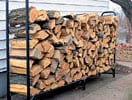
Stump Removals
If you are about to get a tree removed or had one removed years ago, you know the experience: we cut down a tree and think that the experience is over, only to find a stubborn tree stump that will simply not go away. Figuring out how to remove tree stumps can be an arduous process. A shovel, ax, or truck and rope will not pull it out of the ground. Stump removals require specialized equipment, knowledge of wood grain, and planning to make the right calls to local underground utility companies. If your like most homeowners you probably do not have the specialized equipment that we have. We make removing a tree stump easy for you and offer many options to help remove that stubborn old stump.
We are able to remove the largest and most difficult tree stumps with our Rayco, Vermeer, and BCS stump grinders. We offer many different grinding options when it comes to the removal of your stumps. Our most popular stump removal is to grind the stump 8"-10" deep and haul away the stump/soil debris to grass/grade level. I normally advise to wait 1-2 years before you refill old stump with soil and grass.
Our smaller BCS grinder can fit into a 28" wide gate, but can only grind 2"-4" deep. Our larger grinders typically need 38"-54" wide access and can do extra deep stump grinds to 18"-20" to facilitate a new Ball and Burlap tree to be planted in the SAME location as the old tree. CLICK FOR MORE INFO: NEW TREE PLANTING
We can also just pile the mulch for you to keep. This gives the homeowner (or neighbors) an fertile mulch for their garden beds, landscape design, or planters. We also offer to haul away the stump grindings below grade and to replace the new hole with 2"-4" of soil and then grass seed or sod at an additional cost (not often done).
Most tree stumps follow a per stump cost and please provide specific details about stump size, location, and utilities on the CONTACT PAGE for us to get rid of that stump that the lawnmower keeps hitting!
Cabling and Bracing
Cabling and Bracing is done only after corrective pruning to reduce weight on weak systems in the tree. As an adjunct, it can help to reduce the risk of tree or branch failure. Correct installation is crucial in order to have the least possible damage as possible to the tree from the installation itself.
One needs to realize that any kind of cutting or drilling on a tree creates a wound inducing a protective reaction. The fewer and smaller the wounds, the less damage to the tree. Extensive wood decay, large cavities, splits, cracks and dying or dead trees are not good candidates for this technique. If the tree is of value, then this is a great option to provide an additional protection in case of failure. Along with Class 1 Retrenchment pruning, Cabling and Bracing can be done to the most mature trees or very young tree specimens.
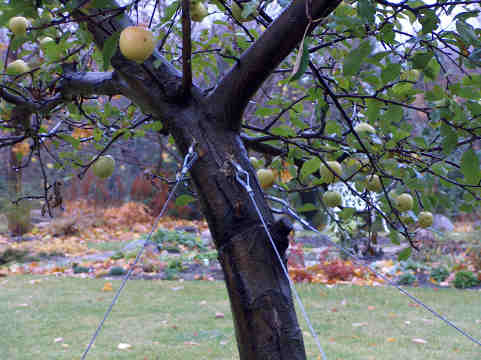
Emergency Storm Work
If you need us, we can be there. We can help without charging you the costly price of emergency services that bigger companies charge. We are here to help our clients when the need arises.
Tree Surgery
A trained eye, a detailed hand, patience, and the experience of knowing that not performing a delicate surgery will undoubtedly be the demise of a tree.
Tree Surgery may be suggested for:
- Wounded trees.
- Improperly planted or mulched trees
- Trees undergoing construction activities
- Surgical root repair (girdling or encircling roots)
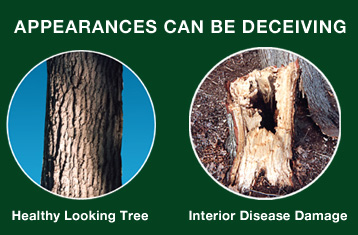
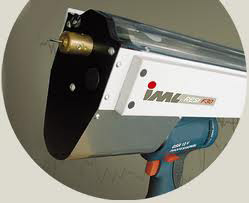
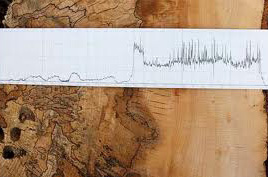
Resistograph
As surely as trees grow up, they will someday come down. The cause of this is often decay started by insect, disease, improper pruning, or mechanical damage. Infected trees may look perfectly healthy on the outside, but when enough wood is decayed it doesn't take a strong wind to bring one down. An untimely gust is often sufficient.
Homeowners concerned about the health and strength of certain trees close to their living space can now call Treehugger Tree Care to have the inside 'support' wood of those trees tested for dangerous rot. Our state-of-the-art wood strength testing system, the IML Resistograph, uses a small diameter needle to bore into suspect trees to measure and record the relative resistance of the inner wood. Very little damage is done to the tree in the process. The results are actually printed out on graph paper for analysis by Jason who can make the appropriate recommendations.
CONTACT PAGE to receive our “Tree Risk Assessments” info sheet to take the first step in learning if your high value tree in your living space poses a imminent threat to you and your family.
And now the fine print...........
___________Terms & Conditions_________
- Treehugger Tree Care, Inc. (hereafter “TTCI”) shall furnish all of the materials and perform all of the work as agreed to in the Proposal as it pertains to work to be performed on property listed (hereafter referred to as the “Work”).
- Disclaimer: Site visits, consultations, estimates, and proposals, do not constitute tree risk assessments. These assessments involve more extensive inspections and will result in additional charges when requested. The opinions expressed by TTCI are merely opinions and do not create any warranty or guaranty that a proposed solution will be successful. Tree owner is responsible for premature tree and branch failures. Trees don’t damage homes if we remove it. If it stays, it may.
- TTCI uses ANSI A300 Tree Care standard definitions. These definitions apply to all work included in this Proposal. A copy of these standard definitions is available from TTCI upon request.
- Safety. All arboricultural operations will follow the latest version of the ANSI Z133.1 industry safety standards. The Client agrees to not enter the work area during arboricultural operations unless authorized by the crew leader on-site (100 feet within tree and equipment). DO NOT enter work area for your safety. Please note that damages and divots to grass and landscape will occur. Driveways may get oil spots, leaks, cracks, or marks from our equipment. Shingles may get nicked, gutters bumped, fences banged, siding scraped, gates bent, landscape lights or irrigation systems damaged, and paint scraps from brush and debris moving, etc. This list is NOT limited to the above, but would be considered cosmetic issues, surface damages, along with basic use fixes like damaged irrigation heads, bulbs, rewiring, caulking, cleaning, re-set-up, etc. We try to limit any “minor” damages, but it does and will occur and we will not be responsible for minor damages. We will try to warn you of most potential hazards at the job site, but do please remove as many possessions away from our work area to keep safe and protected.
- Insurance: TTCI will carry commercial general liability insurance and workers’ compensation insurance, as applicable for all periods when work is performed on this project. Additionally, liability insurance will be carried for all equipment and vehicles used in the project. Client is responsible for any costs resulting from being added to TTCI Insurance policies.
- Exclusions: Unless specified in writing, the following work is not included in this Proposal:
- Stump and subsurface root removal and hauling; Stumps are ground to a depth of 8-10 inches below grade, but are not removed. Grinding is done 8 to 12 inches from surface portions of flare roots and stumps. Grinding of runner roots (above surface roots) is not included unless specifically outlined as a part of the proposal. Grinding of soil mounds outside the 8”-12” stump are NOT included in scope of work, unless otherwise noted.
- Lawn repairs, sidewalk repairs and driveway repairs needed due to TTCI equipment, vehicles or work (Also see non-inclusive list in #4). Damage to plants/landscape in tree operations and tree injections.
- Proposals include wood debris removal as part of service removal and pruning services. We remove an estimated 97% of the wood debris, but we might not clean up about 3% of the wood debris, so do know that smaller sticks, twigs, leaves, rakings, blower debris, dust, sand, saw dust, etc. is common to be left throughout site (lawn, street, alley) and homeowner will be responsible for this minimal 3% cleanup.
- Surcharge of up to 5% hauling fee to be charged on most work sites as noted in Description of Work and work orders older than 30 days. $300.00 hauling fee per contract.
- Pricing & Changes: Costs associated with this project will be as provided in the attached Our minimum dispatch charge for onsite work is $750.00. If all work is not completed as written in proposal a surcharge of up to 40% of total may be imposed (see number 19). Changes to the scope of work will result in additional charges. Our common surcharge is 17% for changes. Alteration or deviation from the proposal involving costs greater than $1,001 may require written approval from the client. Any unwritten changes made to the scope of work will be billed at rates consistent with the accepted proposal. Written or verbal proposals are valid for 30 days.
- New Tree Plantings: TTCI performs all work in a professional manner and according to the A300 standards laid out above. Trees and other plants are delicate organisms subject to a variety of changing conditions. Therefore, TTCI does NOT provide any warranty for trees planted, nor does TTCI protect against vandalism, improper tree care, wind damage, animal damage, improper soil type, and Acts of God. Soil testing, site plan, tree selection, fencing, stacking, guying, watering, mulching, and pruning are not included in standard tree plantings and will result in additional charges. For trees purchased by the Client, a warranty may be provided by the seller of the tree(s). Check with individual sellers for their warranty policies since we do not offer any written or verbal warranty.
- Utilities: TTCI will contact Gopher State One Call at least 48 hours prior to the start of any project that requires extensive digging or dirt removal. It is the responsibility of the Client to notify TTCI of any private utilities, including but not limited to: irrigation systems, invisible pet fencing, wells, septic lines, and any other privately installed utilities. Client must mark any private utilities at least 24 hours before project start. TTCI is not responsible for damage to, or resulting from, unmarked or mismarked private utilities. Any damage to TTCI, TTCI’s employees, equipment, subcontractors, or materials as the result of an unmarked or mismarked utility shall be the responsibility of the Client or any applicable insurance coverage carried by the Client.
- Additional Client Responsibilities: Client is responsible for obtaining any permission necessary prior to approval from private entities including but not limited to: homeowner’s associations, management companies, neighboring properties, etc. Client is responsible for establishing all survey or property boundary lines on the property. Client is responsible for informing TTCI of any foreign materials which may be present in any trees to be worked upon. Examples of such foreign materials include, but are not limited to: nails, chains, and fencing. All aforementioned items in this clause are the responsibility of the Client unless stated in writing and signed by the parties. Client warrants that all trees upon which work will be performed, are located on the Client’s property. TTCI shall not be responsible for any damages resulting from Client’s failure to uphold responsibilities under this paragraph and Client agrees to indemnify TTCI for any damages or costs incurred because of said failure. Client agrees to indemnify and hold TTCI harmless from any damages or legal action which results from Client’s confirmation that all work being done is located on their property.
- Timing: The project start date will be agreed upon by the parties following the acceptance of the Proposal. Work will be done as swiftly as possible; though weather conditions, soil conditions and other factors may lengthen the project process or postpone the estimated project start or completion date. Due to such factors, no starting or completion dates are expressly or impliedly guaranteed. Typically, we can give 12-72 notice of starting time/day.
- Terms of Payments: Per TTCI discretion, a down payment of up to 50% of the total Proposal is due upon signing of this Agreement. The remainder of the Proposal amount plus any additional amounts is due upon substantial completion of the project. Failure to pay outstanding balances within 7 days of work completion will result in interest being charged to the account at a rate of 1.5% per month or the maximum allowable by law, whichever is greater. Client agrees to pay any collections costs incurred by TTCI in pursuing any outstanding balance, including but not limited to attorney’s fees, collections costs and court costs. Client agrees to pay a late fee of $50 for any invoice paid beyond 7 days following work completion. Checks which are returned due to insufficient funds will result in a $75 fee being charged to the Client. An additional 5% fee is added to any credit card payments.
- Subcontractors: Client grants TTCI the right to subcontract the work according to their needs. Subcontractors will carry commercial general liability insurance and workers compensation coverage as required by state law or any other contract associated with the project. “Owner operated” subs might exclude themselves from a workers compensation policy, these subs will be left to cover their own injury, damages, and rehabilitation costs. TTCI and Client is indemnified from subcontractor legal claims.
- Warranty: TTCI performs work in a professional manner and according to ANSI standards. Due to the unpredictable nature of weather, disease, insects, human acts, Acts of God, and other conditions, TTCI does not provide any warranty for work provided under this agreement for any recommended tree health care treatment that is advised or not. Damage to plants/landscape/lawn WILL happen in macro and micro infusion tree injections.
- Promotional Use: Client grants TTCI the right to take pictures, video and make written accounts of this landscape/tree project for promotional purpose and gives TTCI the right to place a yard sign in the front of the property for the duration of the work and for 30 days following completion (uncommon).
- PRE- NOTICE: This notice is to advise you of your rights under Minnesota law (Minn. Stat. §514.011) in connection with the improvement to your property. (a) Any person or company supplying labor or materials for this improvement to your property may file a lien against your property if that person or company is not paid for the contributions. (b) Under Minnesota law, you have the right to pay persons who supplied labor or materials for this improvement directly and deduct this amount from our contract price, or withhold the amounts due them from us until 120 days after completion of the improvement unless we give you a lien waiver signed by persons who supplied any labor or material for the improvement and who gave you timely notice. 17. Cancellation: Client must give TTCI 24 hours written notice of intent to cancel part or all of the Work. Failure to give proper cancellation notice will result in a charge of 25% of the total Proposal amount plus any costs incurred in preparation for execution and installation of the project. Products which have been special ordered for this project must be paid in full regardless of cancellation notice. Damages for failure to complete the project as ordered shall not exceed the Total Contract Price. If we arrive at job site and complete no work, our minimum dispatch charge for trip is $750.00. 18. Refunds: There will be no cash/check refunds or any credits applied to accounts or invoices 7 days after payments are made. Overpaid accounts or invoices, after 7 days, will be property of TTCI. 19. Surcharge: If all services (as written in “Description of Work”) are not fully contracted, client may be imposed a 17% - 40% surcharge for breaking up “wholesale” price of proposed work. 20. Choice of Law: This agreement will be governed by the laws of Minnesota. The parties agree to make a good faith effort to resolve any disputes which arise from this agreement through direct contact, in an informal manner. Should informal efforts be unsuccessful, the parties may use any legal remedies available to them under Minnesota or federal law. 21. Severability: Should any part of this agreement be deemed unlawful, the remainder of the agreement shall remain in effect and be fully binding on the parties. 22. Merger: This proposal constitutes the entire agreement between the parties, all prior negotiations and commitments being merged herein. CONTACT PAGE
